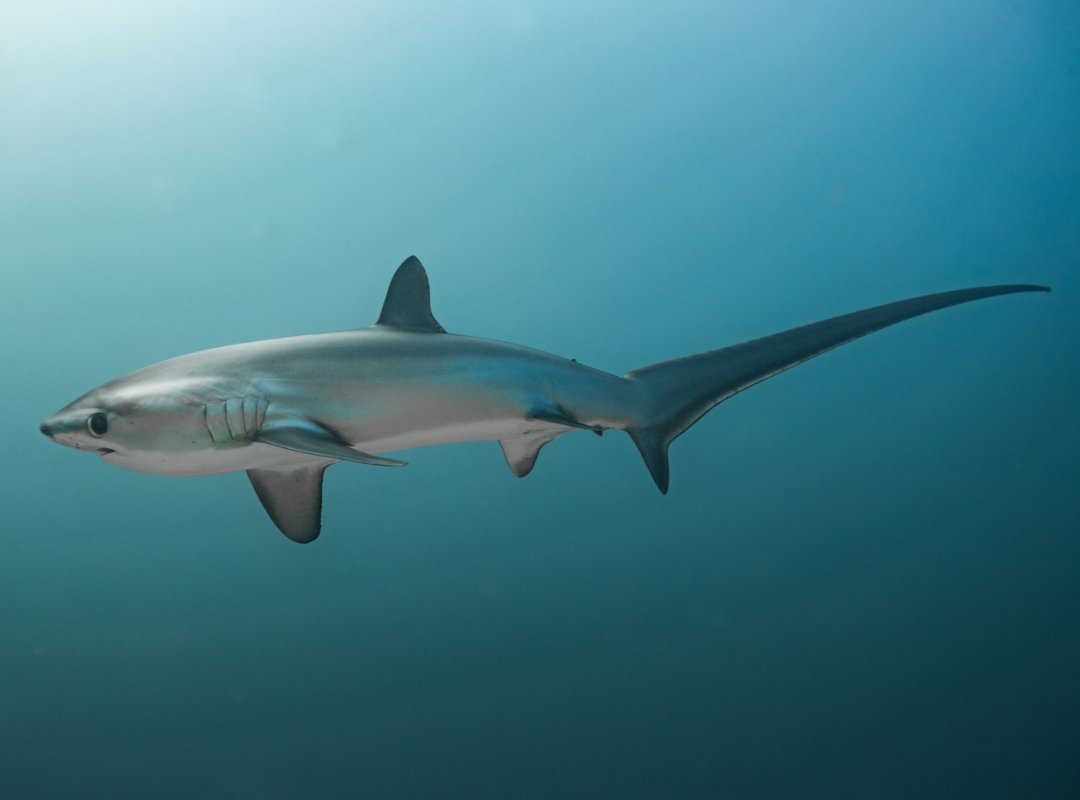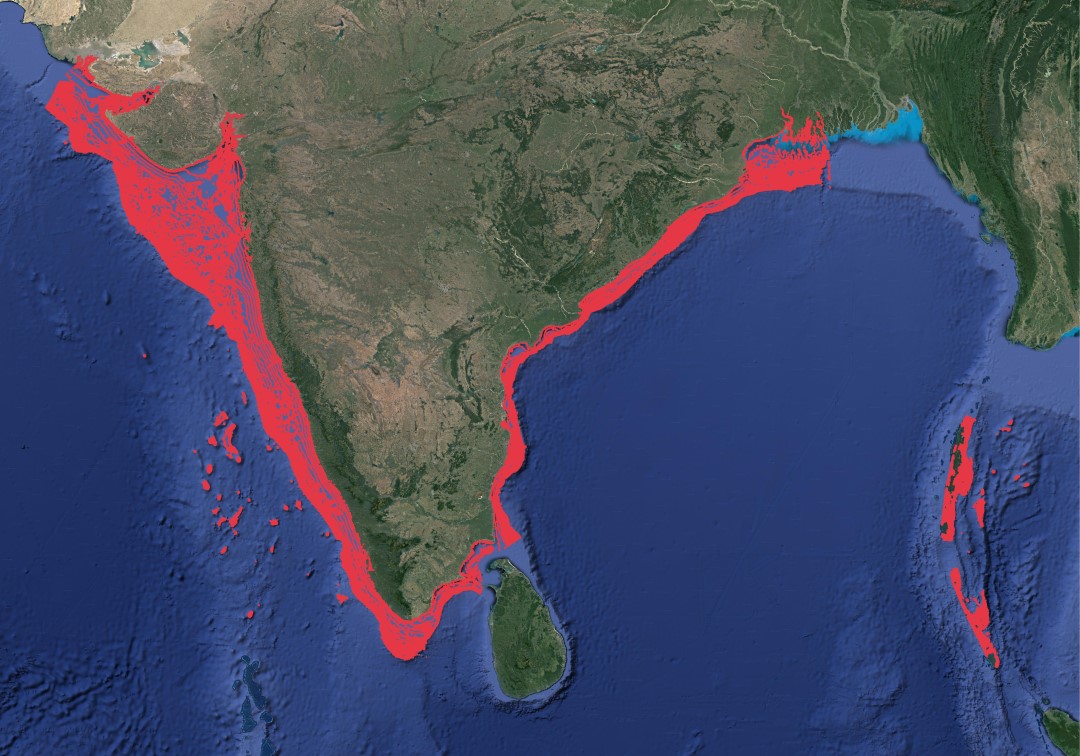Species Name
Pelagic Thresher
Scientific Name
Alopias pelagicus
Family Name
Alopiidae
IUCN Status
Endangered
Upper caudal lobe enormous, longer than the rest of the body; eyes large, positioned on the side of the head; no labial furrows on the mouth or deep grooves behind the eyes, second dorsal fin and anal fin very small
Biology
Length: One of the three thresher shark species, the pelagic thresher shark is distinguished by its long, whip-like tail, which it utilises to stun and capture food. The pelagic thresher shark typically measures between 3.6 and 4.3 metres (11.8 and 14.1 feet) in length. They can, however, reach 4.9 metres (16 feet) in length.
Gestation period: 9 to12 months
Littter size: The pelagic thresher shark is ovoviviparous, which means that the mother's body produces live young while the embryos grow inside the eggs. Compared to other shark species, their litter sizes are relatively tiny. The pelagic thresher shark typically produces litters of 2 to 4 young.
Life Expectancy: Pelagic thresher sharks' exact life lengths in the wild are not well known, although like many other shark species, it is thought that they have rather long lives. According to some estimates, they can survive for up to 20 to 30 years or longer in ideal circumstances.
Diet: The pelagic thresher shark is largely a piscivorous species, which means that fish are its main food source. To make it simpler for them to catch their meal, its whip-like tail is employed to stun schools of small fish. They have been observed to consume a variety of schooling species, including sardines, mackerel, and squid.
Habitat and Distribution
Habitat: Pelagic thresher sharks are primarily found in the open ocean, preferring deep waters far from shore. They are known for their pelagic (open-water) lifestyle, and they are often encountered near underwater seamounts and drop-offs where there is an upwelling of nutrient-rich waters, attracting their prey. These sharks are highly adapted to the open ocean and are known to make extensive vertical movements within the water column, often diving to great depths during the day and coming closer to the surface at night.
Distribution: Alopias pelagicus has a wide distribution across tropical and subtropical waters of the world. They are found in both the Indian and Pacific Oceans, and their range extends from coastal areas to oceanic waters. Some specific regions where they have been recorded include the eastern Pacific Ocean from California to Chile, the western Indian Ocean, the central and western Pacific Ocean, and the western coast of Mexico.
Known landing centres: Cochin Fisheries Harbour Thoothukudi, Threshpuram, Tharuvaikulam, Vembar, Vellapatti, Junglighat, Burmanallah, Wandoor, Dignabad, Cochin Fisheries Harbour, Veraval, Mangrol, Porbander and Okha.
Depth: Pelagic thresher sharks have been observed at various depths within their wide vertical range. They are known to undertake deep dives, reaching depths of up to 500 meters (1,640 feet) during the day to pursue prey, which primarily includes small fish and squid. At night, they often ascend to shallower depths, which makes them more accessible to observation.
Commercial Value
The individuals landed as bycatch are sold in the local market for consumption
Threats
Intense fishing pressure, caught as bycatch using inshore fishing gear (commercial and small-scale pelagic longline, purse seine, and gillnet fisheries)
References
- Compagno, L.J.V., 1984. FAO Species Catalogue. Vol. 4. Sharks of the world. An annotated and illustrated catalogue of shark species known to date. Part 1 - Hexanchiformes to Lamniformes. FAO Fish. Synop. 125(4/1):1-249. Rome, FAO.
- Kizhakudan, Shoba Joe and Akhilesh, K V and Thomas, Sujitha and Yousuf, K S S M and Sobhana, K S and Purushottama, G B and Muktha, M and Dash, Swatipriyanka Sen and Manojkumar, P P and Nair, Rekha J and Najmudeen, T M and Zacharia, P U (2018) Field identification of batoids – a guide to Indian species. CMFRI Special Publication (132). ICAR - Central Marine Fisheries Research Institute, Kochi.



